Lillian Schwartz: Artist and Inspiration
As we enter the final month of the Lillian Schwartz: Whirlwind of Creativity exhibit at The Henry Ford — which also happens to be Women’s History Month — it seems a good time to acknowledge Lillian’s life and work as an artist who made groundbreaking contributions in the fields of creative computing and technology.
While Lillian’s skills as a painter and sculptor became evident decades before she began producing work at Bell Laboratories in the late 1960s, it was in this environment where she produced her best-known computer-mediated films and digital art. Her exposure and access to powerful bleeding edge technology at the Labs led to the creation of instantly iconic experimental films such as Pixillation, UFOs, and Enigma — among many other titles. These films continue to be sought after for exhibitions and film screenings globally, even today.
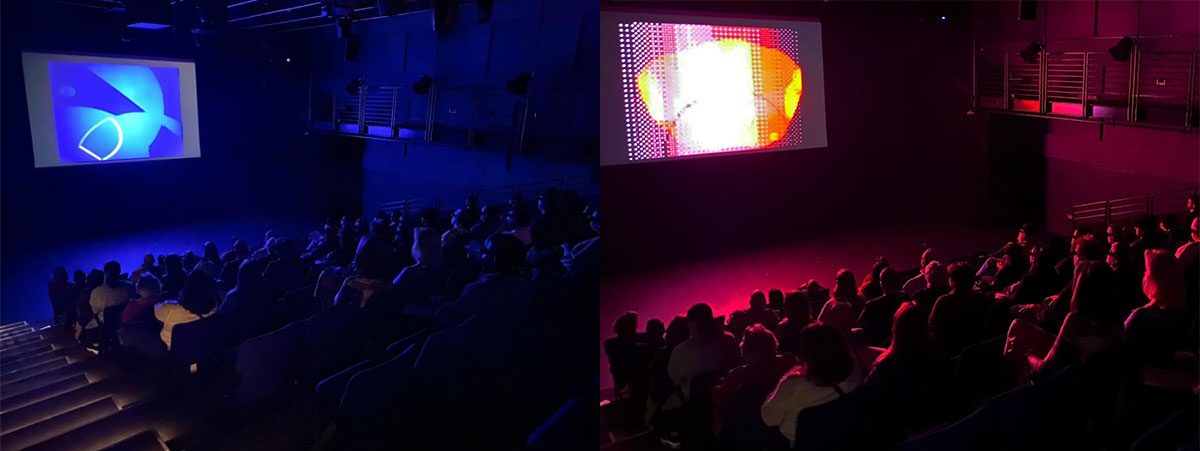
Views of the audience at the recent “Lillian Schwartz: Early Permutations” screening co-presented by the Aurora Picture Show and Moody Center for the Arts in Houston, TX. Images courtesy of Peter Lucas.
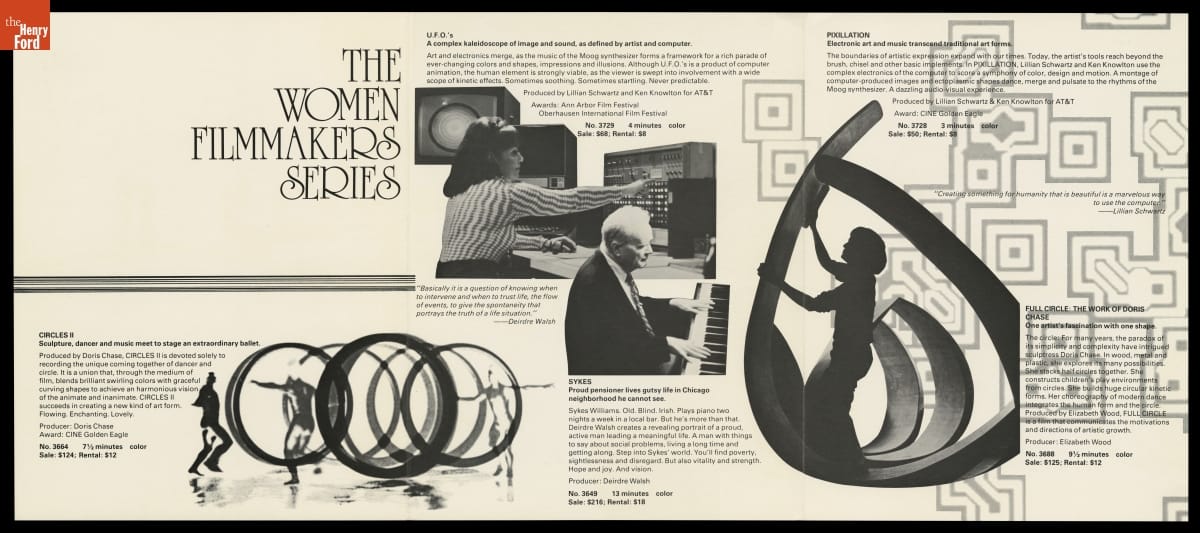
“The Woman Filmmaker: Artist and Inspiration,” a brochure that included Lillian Schwartz’s films for distribution, c. 1975. / THF706074
Lillian has acknowledged some of the barriers that she experienced as a woman working at the crossroads of art and technology, but it is also easy to surface additional challenges she faced through correspondence, newspaper clippings, and critical responses to her work by critics. The very title of The Henry Ford’s exhibit, Whirlwind of Creativity, is a reframing of a 1980 newspaper article titled “A Whirlwind of Feminine Creativity.” In it, we see Lillian described by the author as an innovator but also as a “petite, vivacious grandmother who appears half her age.”
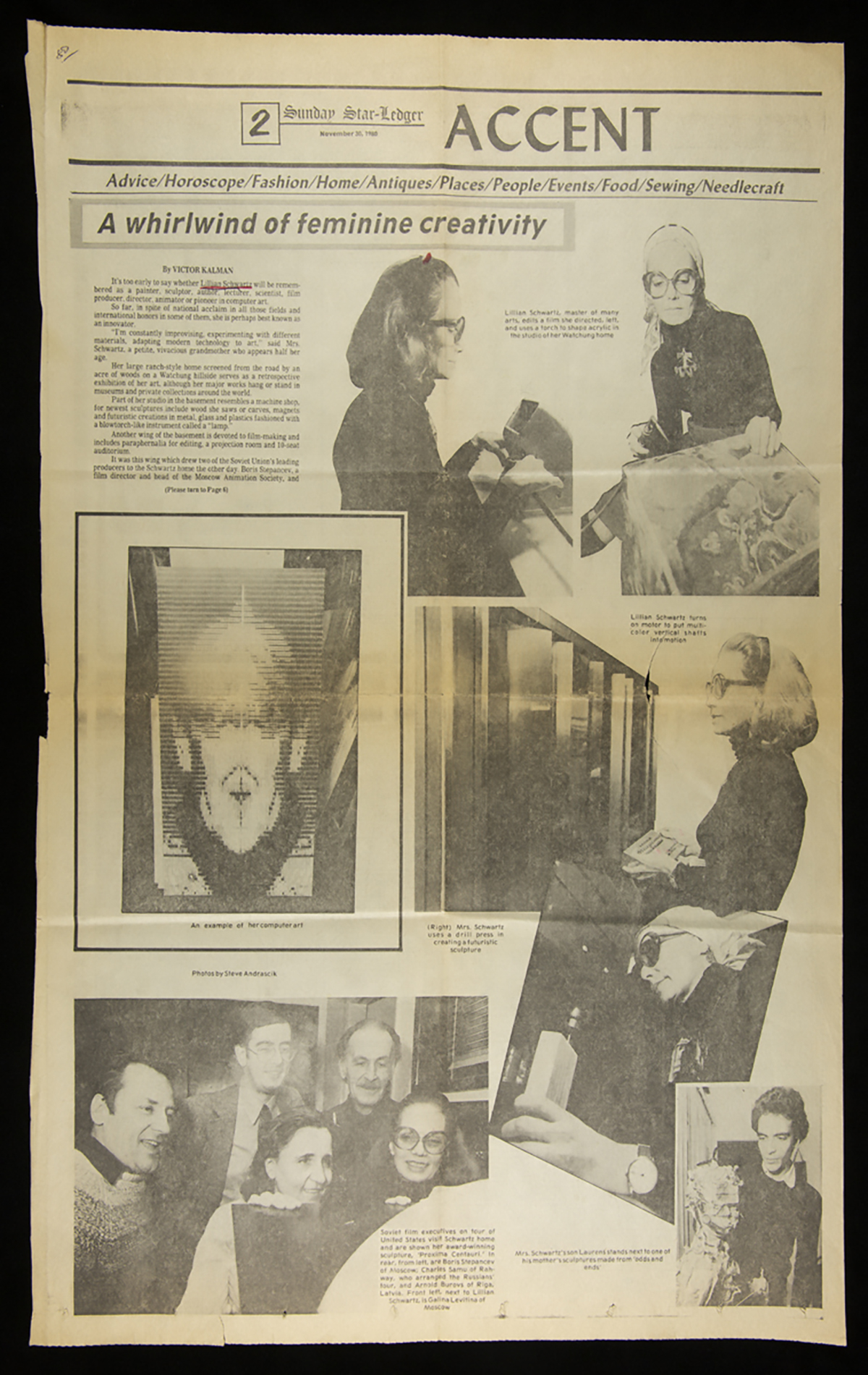
A newspaper clipping titled “A Whirlwind of Feminine Creativity” featuring Lillian Schwartz, Star-Ledger, November 30, 1980. / THF706043

A newspaper clipping titled “Computer Creates Art in Watchung,” New York Times, February 2, 1975. / THF706051
Lillian’s career began at a time when artists had to defend technology as an acceptable way of making art, resisting those journalists who used terms like "sideshow" to describe their work. Some critics wrongly believed that computer-generated and -assisted art did not require the input of humans to do interesting work. As a result, journalists sometimes failed to give Lillian adequate recognition, assigning more credit to the computer than to the artist, as seen in a New York Times headline from 1975, “Computer Creates Art in Watchung.” But as the savvy author B.J. Foreman reminded people in his 1978 article, “Art in the Solid State”: “For a computer to make art, there must be an artist plugged in somewhere.”
Beyond learning how to apply new forms of technology to create early digital art, Lillian was at the same time learning how to navigate the people, culture, and rules in a male-dominated science and research incubator. While she received payment to create her first film, Pixillation, and later as a contracted “graphics consultant,” most of her time at Bell Laboratories from 1969 into the early 2000s was as an unpaid “resident visitor.” In a 2013 oral history with the Computer History Museum, she noted that at the Labs, “there were very few women scientists. […] It was well known that the women scientists were paid lower than their male counterparts.” Despite the success of her 1970s films, many top executives were not aware of her visits or collaborations with scientists working there until the mid-1980s.
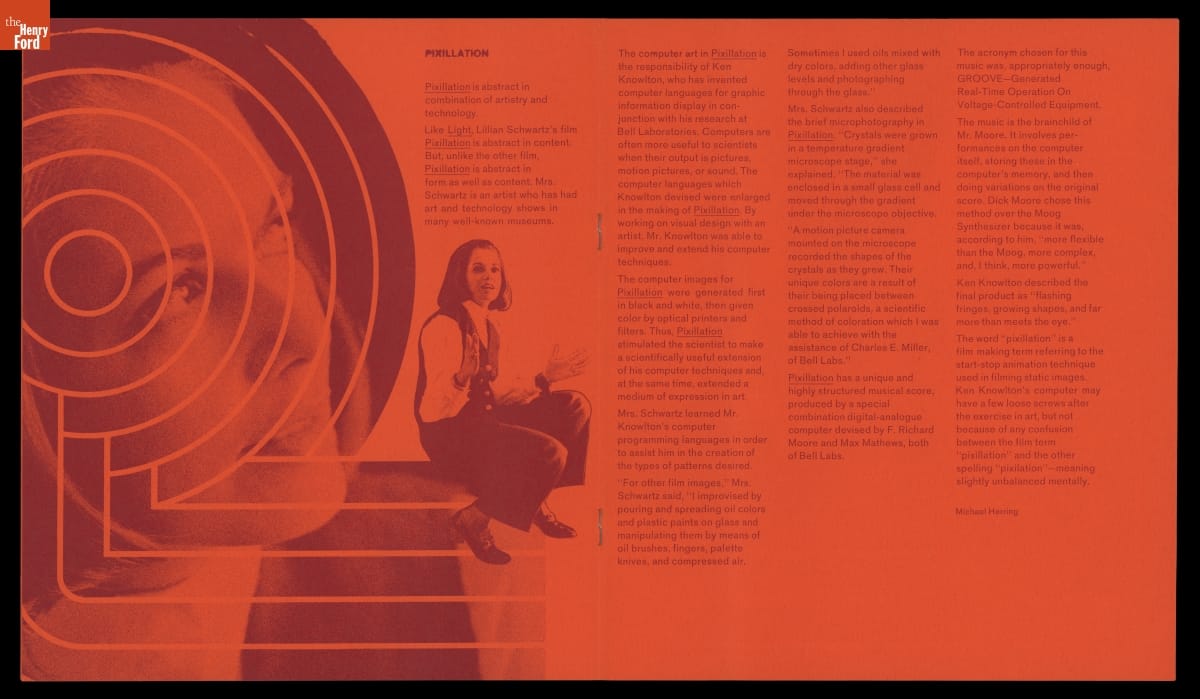
A brochure for a film program featuring Lillian Schwartz’s films called “Quintet: An Experiment in Communication Through 5 Films,” 1970. / THF706961
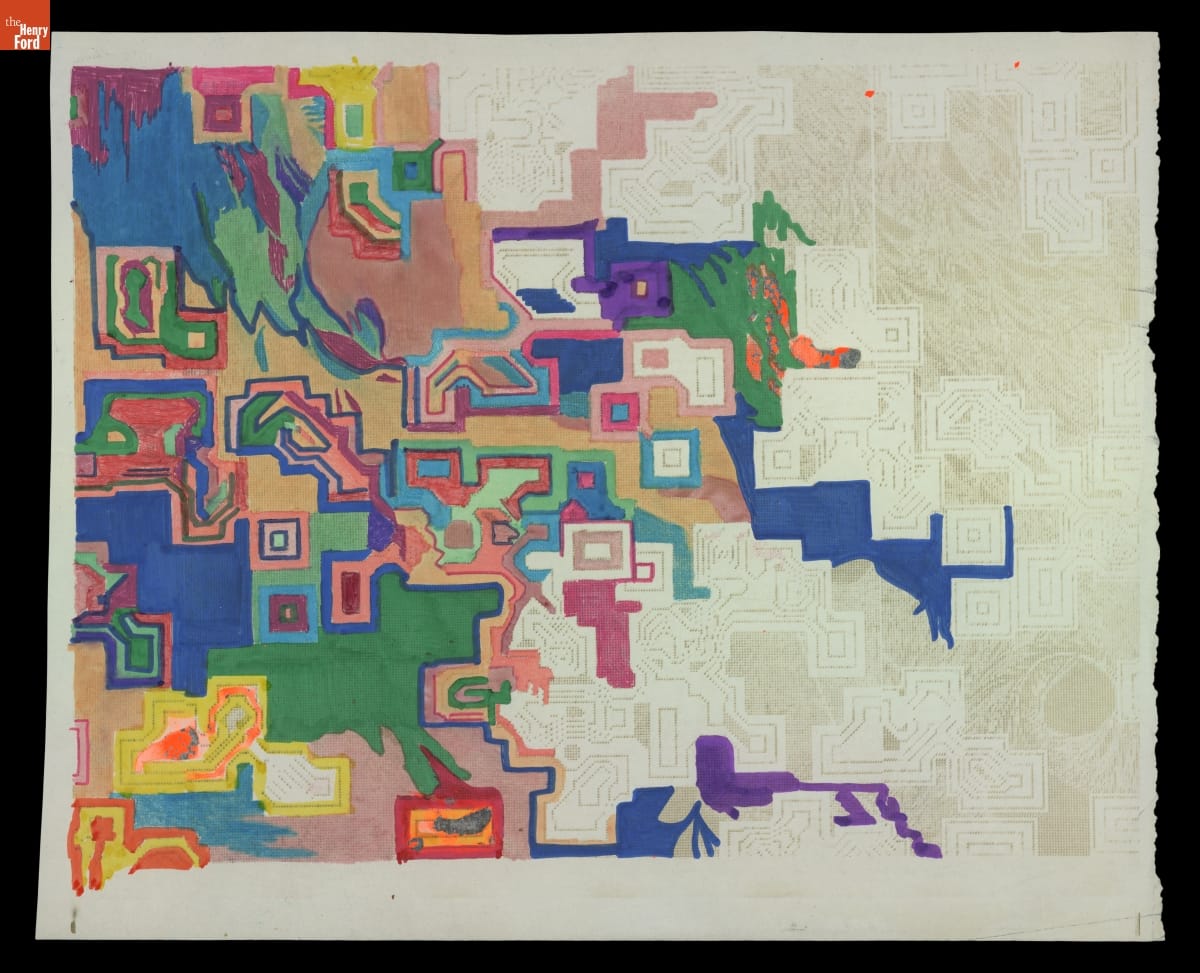
A handcolored still from Lillian Schwartz’s film, Pixillation, c. 1970. / THF705961
Max Mathews, director of Bell's Acoustical and Behavioral Research Center, supported Lillian's work. However, when a group of shareholders visited, Mathews worried that she would be exposed as a non-scientist, so he made up a fake title, telling her to introduce herself as a "morphodynamicist." When Lillian's work received a wave of press attention in 1984, the president of Bell, Ian M. Ross, called her to his office: "He said, 'You're not even in the phonebook. I mean, you've been here since ‘68.' He was very upset." Ross sent Lillian to meet with the company's lawyers, and she believed she would be banned from the Labs. Instead, this is when she received her badge stating that she was a “resident visitor.” "From then on,” Lillian stated, “I was safe."
In 2021, thanks to the generosity of the Schwartz family, The Henry Ford became the permanent home for the Lillian F. Schwartz & and Laurens R. Schwartz Collection, which contains thousands of objects that document her practice from the 1930s into the 2020s. The exhibition, Lillian Schwartz: Whirlwind of Creativity, is open to the public in the Collections Gallery in Henry Ford Museum of American Innovation until March 31, 2024.
Kristen Gallerneaux is Curator of Communications & Information Technology and Editor-in-Chief for Digital Curation at The Henry Ford.

